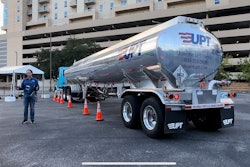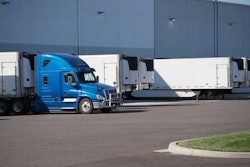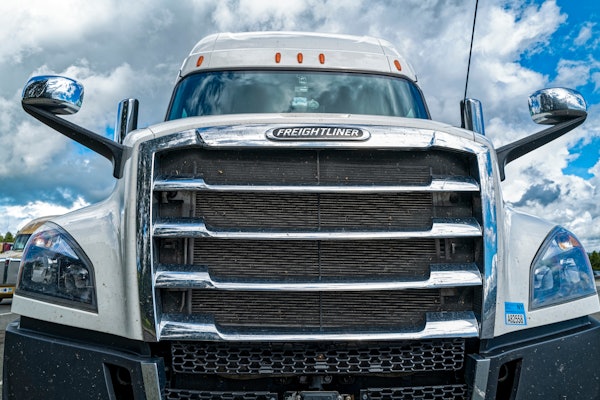Business continuity planning can go in many directions. Preparing IT systems to withstand an earthquake, cyberattack, or other natural and man-made disaster is a starting point. Motor carriers must also prevent costly disruptions when they change ELDs, vehicle telematics, and other mobile or backend systems.
Fleets can prevent system outages by implementing software and network redundancy. They can also avoid disruptions when changing mobile or backend applications by using a unified interface that gives drivers uninterrupted access to all the tools they need inside and outside the cab. Custom apps enable fleets to do both.
The power of redundancy
The electronic logging device (ELD) compliance deadline of Dec. 17, 2019, propelled fleets to implement new in-cab and mobile applications. For many, this change was a departure from the traditional mobile technology deployment model, where fleets sourced their hardware, software, and wireless data from a single supplier.
The ELD mandate opened the floodgates of technology. New providers entered the market without the burden of supporting legacy hardware and software platforms. This allowed them to focus on developing innovative fleet management platforms that run on any device and integrate with applications from other software providers.
A custom app platform that emerged in the post-ELD era allows fleets to use pre-built components and system integrations to deploy apps tailored to their unique specifications. Fleets can run their custom apps on existing in-cab tablets and drivers’ smartphones, giving drivers a single sign-on to access ELD information, turn-by-turn navigation, training, document capture, and more, inside and outside the cab.
Unifying the driver experience
A unified mobile driver interface ensures continuity when fleets switch ELDs or vehicle telematics systems. New hardware or software additions can integrate seamlessly with custom apps to ensure drivers have a consistent user experience when fleets incorporate new applications or data into the daily workflow, such as locations, hours-of-service duty status, messaging, and training content.
Should fleets have an outage with an ELD or telematics system, their custom apps keep drivers and the office connected to track shipments and capture load details and documents, among other mission-critical functions.
Traditional in-cab mobile platforms lack a failover plan when fleets lose connectivity with their drivers and vehicles during a software or network outage. Fleet operations are at a standstill when losing visibility to driver hours-of-service duty status and locations.
Limited out-of-cab communications is another drawback of using standalone ELD or telematics platforms. Drivers miss important updates and messages outside the cab, negatively impacting their trip planning and job satisfaction.
Accelerated onboarding
Business continuity planning also extends to driver onboarding. One way to address turnover is by giving new drivers a more straightforward job transition with familiar and intuitive technology.
Millennials are now the largest segment of the workforce. This generation and younger workers that follow expect the technology they use at work to mirror technology in their personal lives. A custom app with an easy-to-navigate menu makes it simple for drivers of all ages to get up to speed on mobile workflows and functions quickly.
Besides improving driver onboarding, custom apps simplify new technology deployment. When drivers have a unified interface that keeps them connected with all other mobile applications, a fleet can change components — like an ELD — without needing to train drivers on a new system. While the data changes, the interface stays the same. This convenience helps fleets and drivers reap the benefits of their technology investments more quickly.
Putting continuity in motion
Ezzell Trucking and TMC Transportation are on different ends of the spectrum of fleet size, yet both have similar experiences using custom apps to drive business continuity.
Ezzell Trucking had several costly hardware updates and service disruptions with a previous in-cab fleet management system. Catherine Ezzell Joyner, president of the Delway, N.C.-based company, wanted a mobile platform to give the 65-truck fleet more control and flexibility.
An immediate need was digitizing its driver workflows. “We needed to simplify and streamline. A custom app would enable us to do that,” she said.
Ezzell Trucking deployed a custom app on in-cab tablets and drivers’ smartphones. The custom app is integrated with the company’s transportation management system (TMS) to instantly update a driver's workflow. The app provides document scanning capabilities, among other features.
Most importantly, the fleet can evolve its custom app as needs change.
“You simply log into the system software and move pieces around. You can change your workflow. The ability to do that and integrate everything into a simple, easy-to-navigate screen from a driver's perspective is fantastic,” she said.
TMC Transportation also developed a custom app that enabled the Des Moines, Iowa-based fleet to change its ELD telematics system without significantly updating how drivers view the information in the app.
The custom app pulls data from the new ELD telematics system. In most cases, drivers were unaware that a telematics change had occurred. No training was necessary, and drivers experienced zero disruption to their daily processes.
In summary, custom apps that integrate with existing back-office and mobile technology help motor carriers attain higher levels of business continuity with software and network redundancy and make a seamless transition when changing an ELD, telematics platform, or mobile application. The technology also helps fleets onboard drivers faster and more fluidly.











